Introduction
The management of infrastructure assets is a cornerstone of economic vitality, influencing everything from productivity to public safety. As cities expand and the demands on infrastructure intensify, the importance of effective asset management becomes increasingly clear. This article delves into the multifaceted role that infrastructure asset management plays in supporting economic growth, addressing the challenges organizations face, and exploring innovative strategies and technologies that enhance maintenance practices.
By understanding the significance of these systems and the future trends shaping their evolution, stakeholders can make informed decisions that not only safeguard existing assets but also lay the groundwork for sustainable development in the years to come.
The Economic Significance of Infrastructure Asset Management
Infrastructure asset oversight plays a pivotal role in underpinning economic activity. Effective oversight of asset systems—such as roads, bridges, and utilities—ensures their durability and functionality, which directly affects productivity and quality of life. As stated by the American Society of Civil Engineers, the decline of public works can result in considerable financial losses, with projections indicating that the U.S. alone might forfeit trillions of dollars due to insufficient upkeep. Efficient resource oversight not only maintains current infrastructure but also enables informed investment choices, ultimately promoting economic resilience and growth.
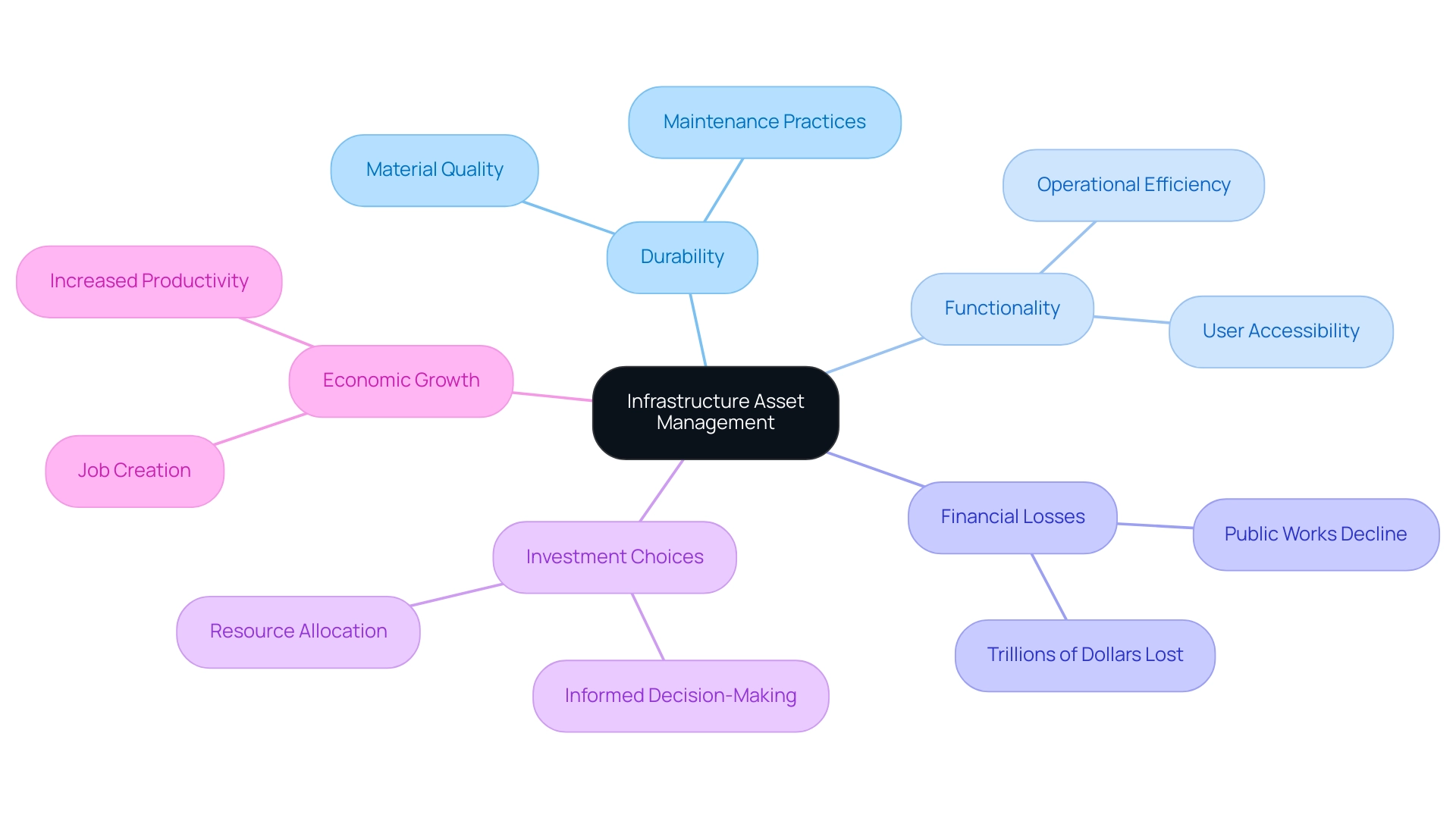
Challenges in Infrastructure Maintenance and Sustainable Management Strategies
Infrastructure upkeep is filled with difficulties, including budget limitations, aging resources, and a shortage of skilled labor. Many municipalities and organizations face funding gaps that hinder their ability to carry out necessary repairs and upgrades.
Sustainable oversight approaches, such as prioritizing preventive upkeep and leveraging public-private collaborations, can alleviate these challenges. For example, adopting a lifecycle strategy to resource oversight enables organizations to evaluate the long-term expenses of upkeep compared to replacement, resulting in more informed financial choices and improved resource distribution.
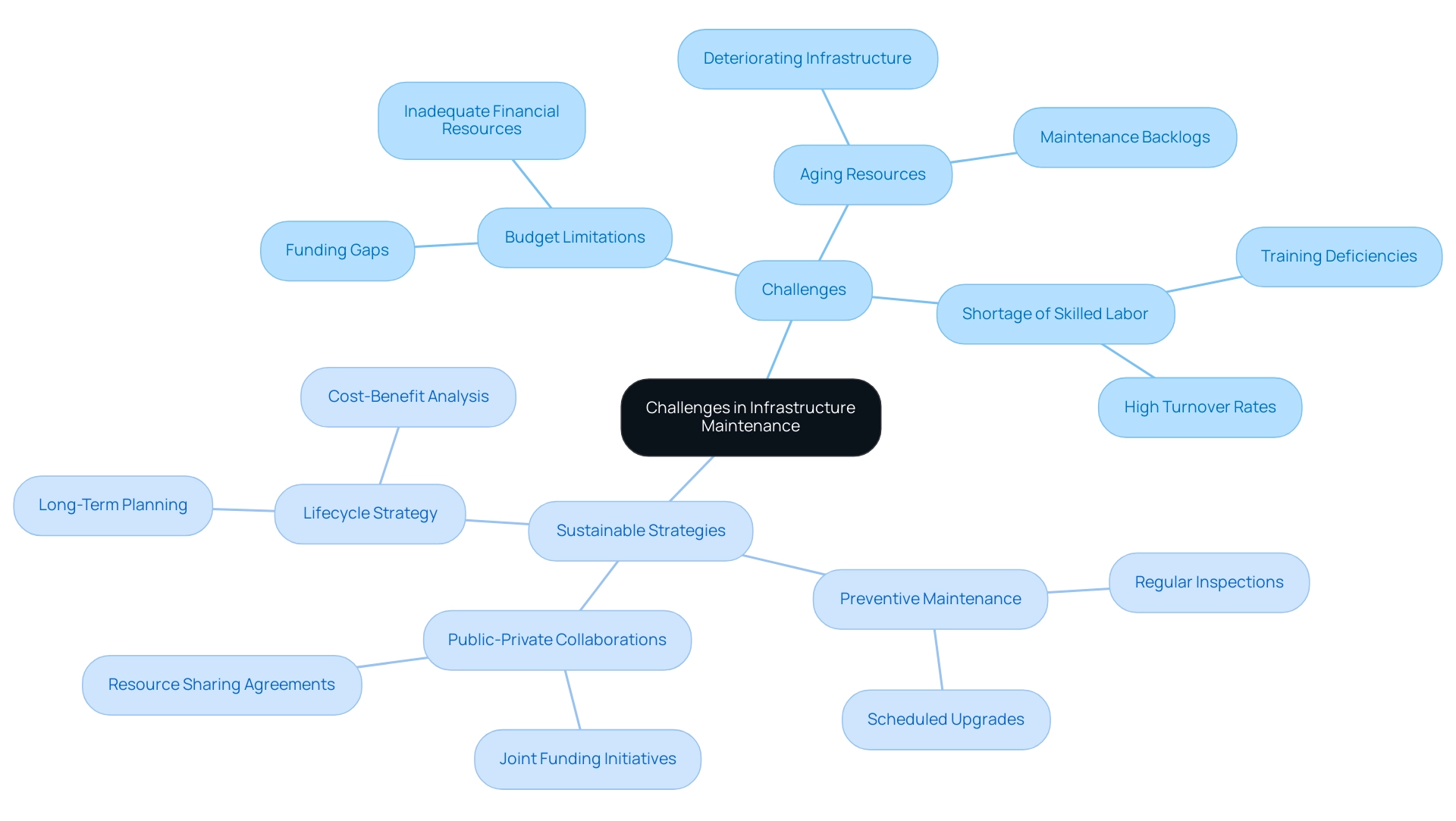
Enhancing Public Safety Through Effective Asset Management
Efficient oversight of essential facilities directly enhances public safety by ensuring that roads, bridges, and utilities are preserved to comply with safety standards. Regular inspections and timely repairs prevent accidents and service disruptions. For example, the failure of systems due to neglect can lead to tragic outcomes, as seen in numerous high-profile incidents.
By adopting strong resource oversight practices, organizations can proactively tackle safety issues, ultimately safeguarding the lives of citizens and boosting confidence in public services.
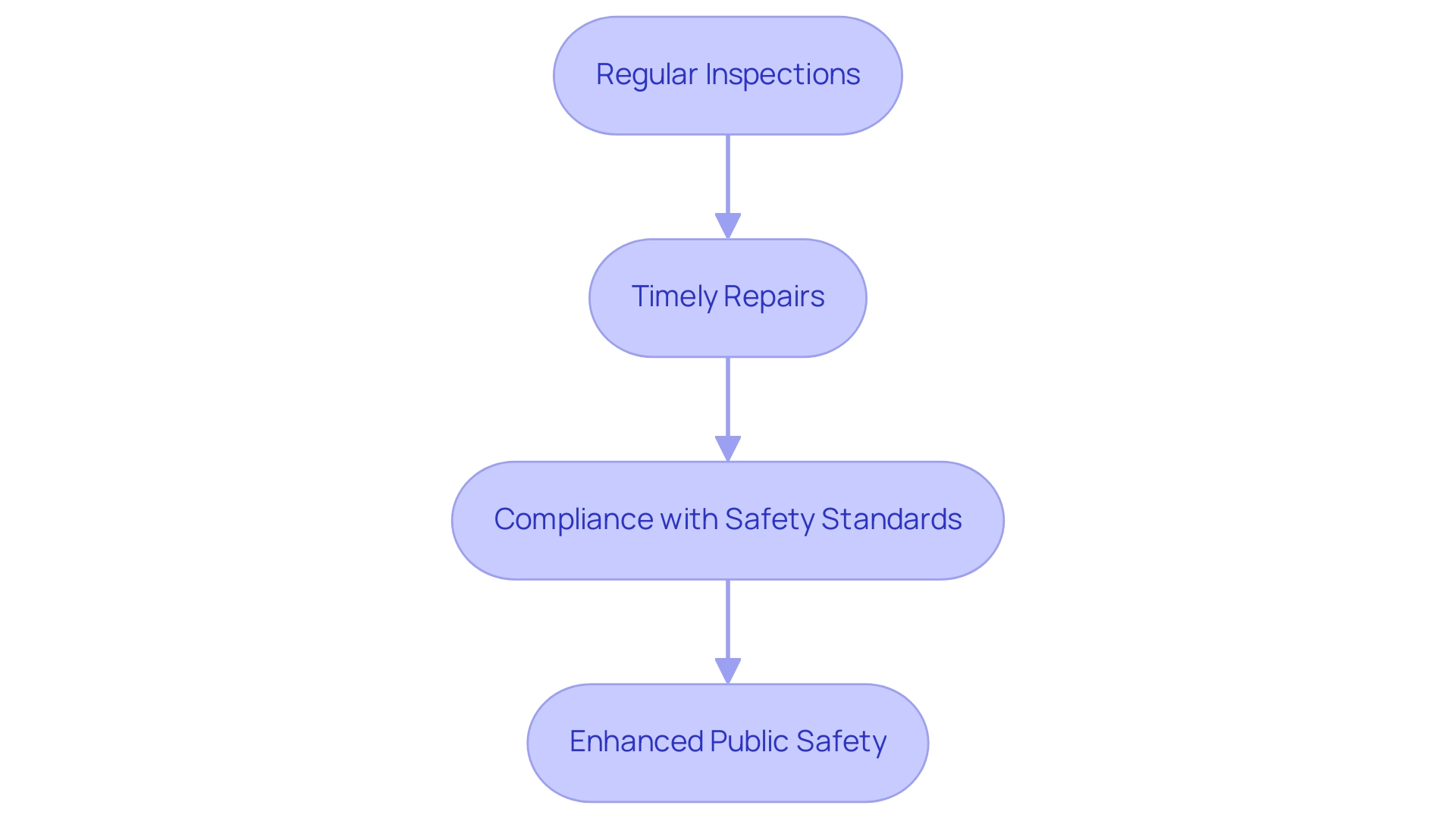
Leveraging Technology for Improved Infrastructure Asset Management
The incorporation of technology into infrastructure management is transforming the field. Tools such as Geographic Information Systems (GIS) and AI-powered analytics enable organizations to collect, analyze, and visualize data more effectively. For instance, GIS mapping can provide real-time insights into resource conditions, allowing for better planning and allocation. Additionally, predictive analytics can forecast potential failures, enabling proactive maintenance strategies that enhance longevity and reduce expenses. These technological advancements not only streamline operations but also enhance the overall efficiency of resource handling practices.
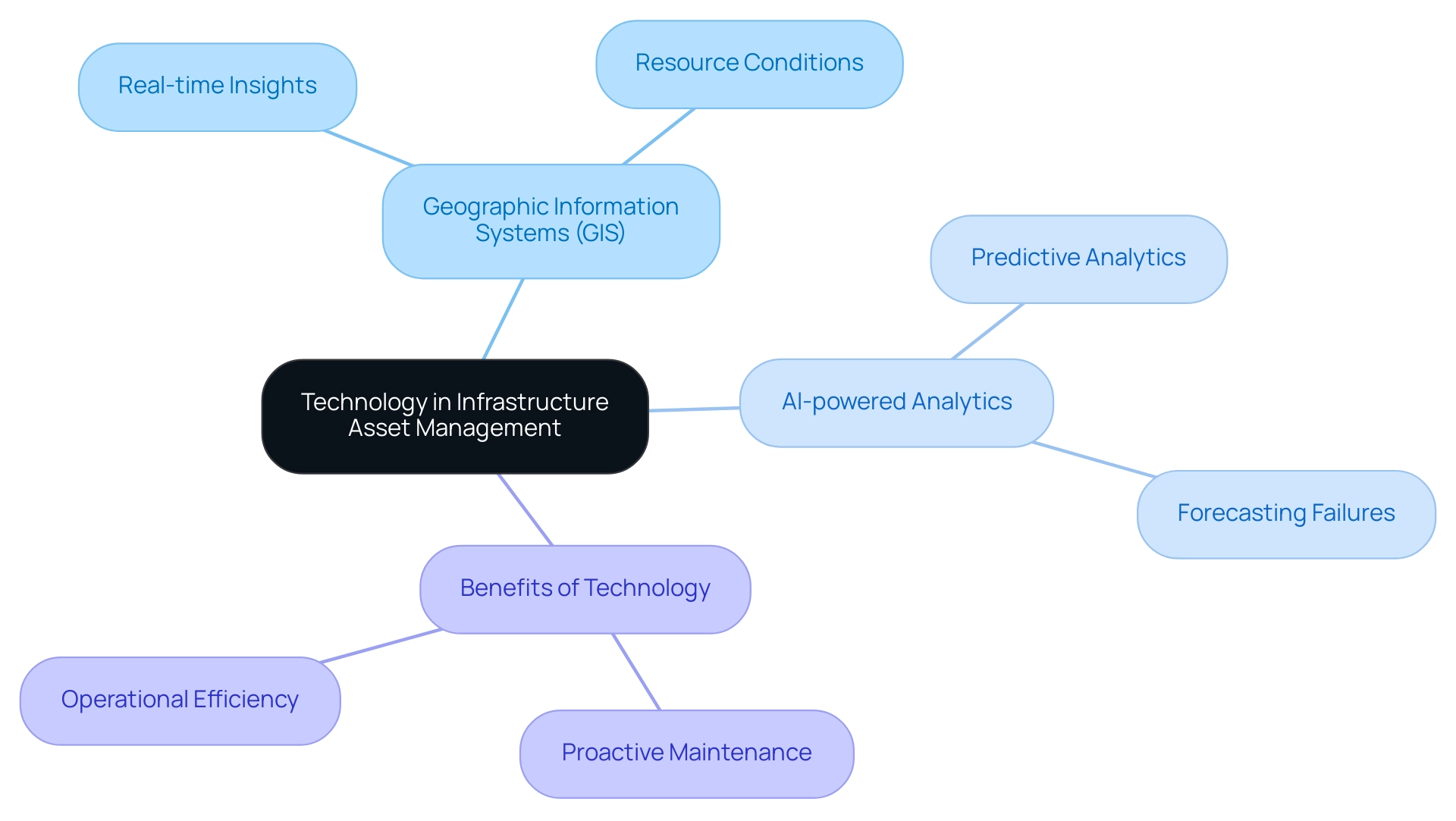
Future Trends in Infrastructure Asset Management
The future of facility resource oversight is likely to be influenced by several key trends, including:
- Heightened dependence on data analysis
- Sustainability efforts
- Intelligent system development
As cities expand and climate change affects infrastructure, there will be a greater focus on adaptive strategies that take environmental factors into account. Moreover, the increase of intelligent technologies—like IoT sensors and AI—will improve the capacity to oversee and control resources in real-time, resulting in more adaptive and efficient strategies. Organizations that embrace these trends will not only improve their asset management practices but also contribute to the resilience and sustainability of the communities they serve.
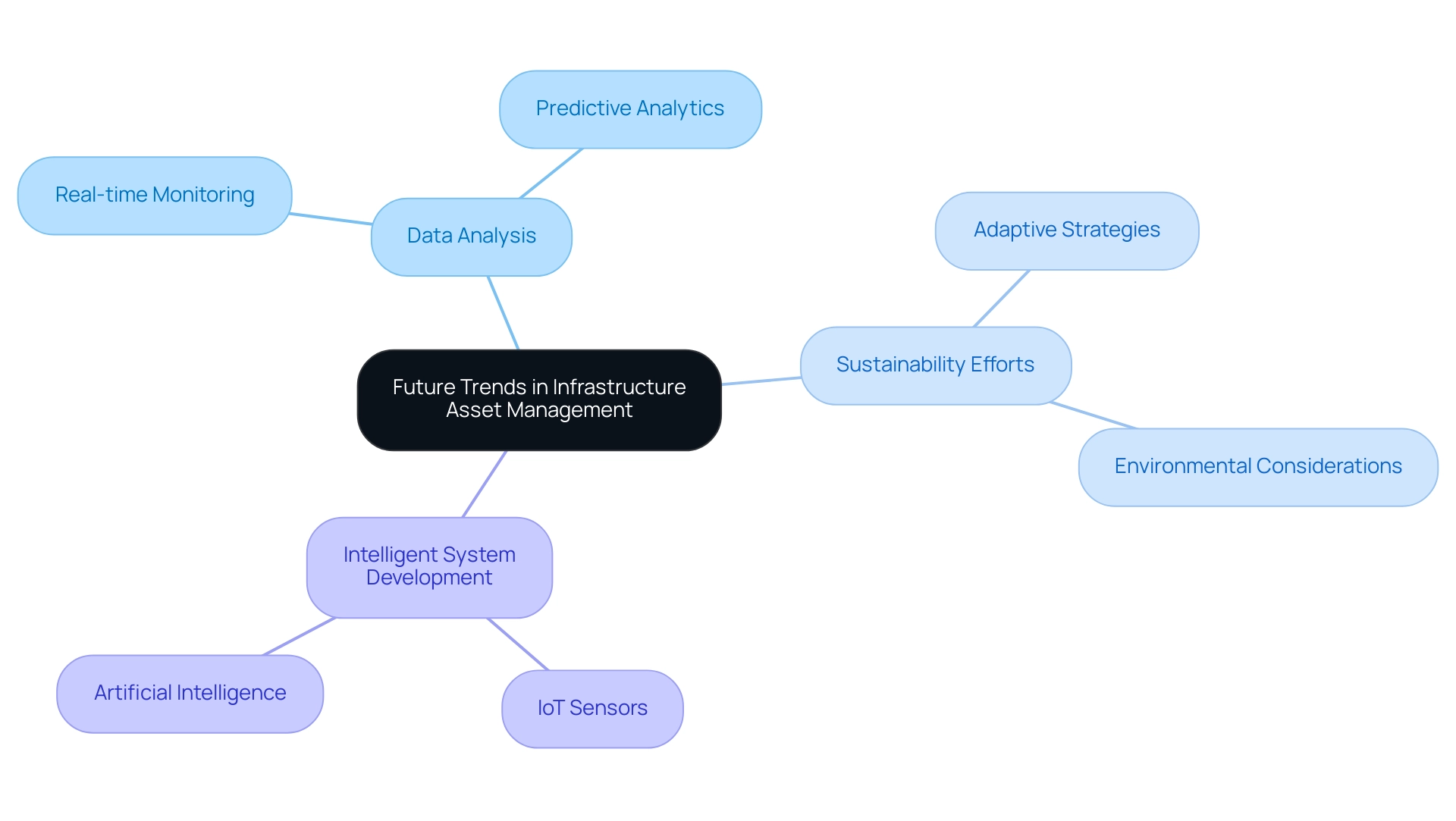
Conclusion
Infrastructure asset management is essential for fostering economic vitality, enhancing public safety, and ensuring the longevity of critical infrastructure. The effective management of assets such as roads, bridges, and utilities directly influences productivity and quality of life. As highlighted, the consequences of neglecting infrastructure can lead to substantial economic losses, underscoring the importance of informed investment and maintenance strategies.
Addressing the challenges of infrastructure maintenance requires innovative and sustainable management approaches. By prioritizing preventive maintenance and leveraging public-private partnerships, organizations can navigate funding constraints and aging assets more effectively. A lifecycle approach to asset management enables better financial decision-making, ultimately leading to more efficient resource allocation.
Moreover, the integration of technology into asset management is transforming how organizations monitor and maintain infrastructure. Advanced tools such as GIS and AI-powered analytics provide valuable insights that facilitate proactive maintenance strategies and enhance overall operational effectiveness. With the emergence of smart technologies, the future of infrastructure asset management promises to be more responsive and adaptive, addressing the evolving needs of urban environments.
In conclusion, the strategic management of infrastructure assets is not merely a necessity but a crucial investment in the future. By embracing sustainable practices and technological advancements, stakeholders can ensure that infrastructure not only meets current demands but is also resilient enough to withstand future challenges. The commitment to effective asset management will ultimately safeguard public safety, bolster economic growth, and contribute to the sustainable development of communities.




